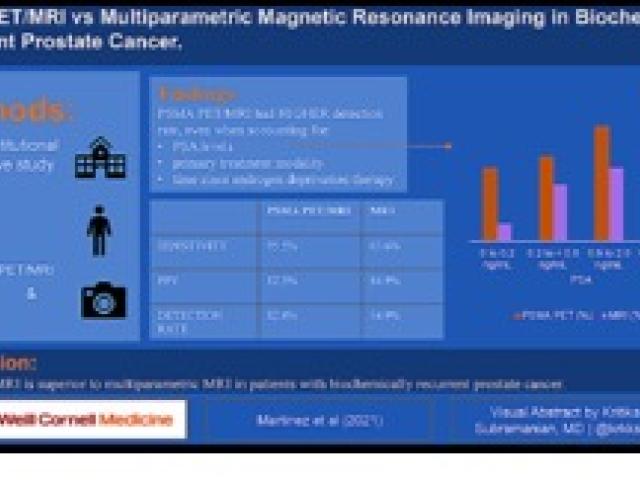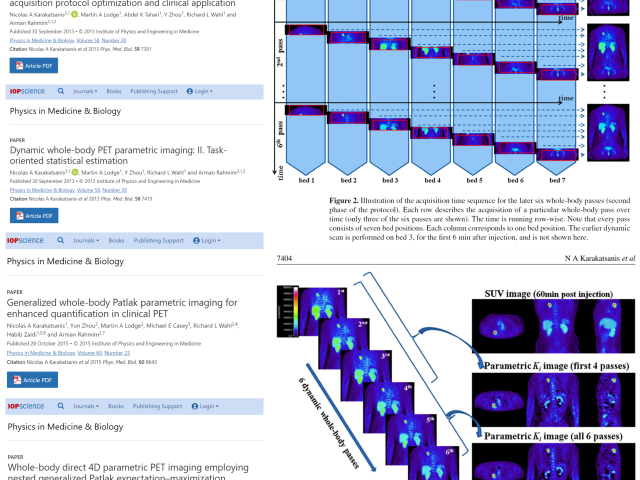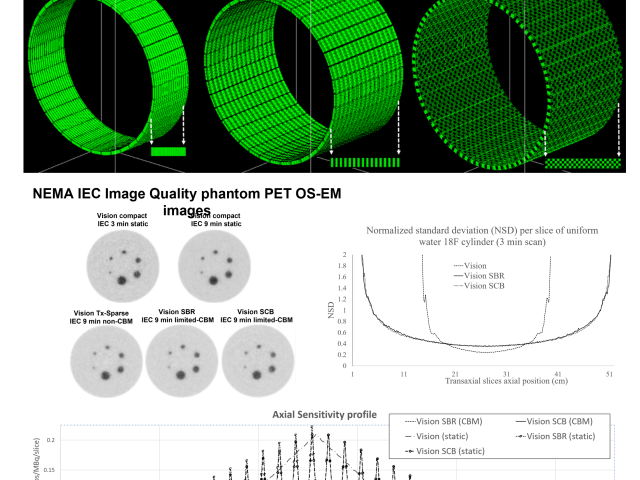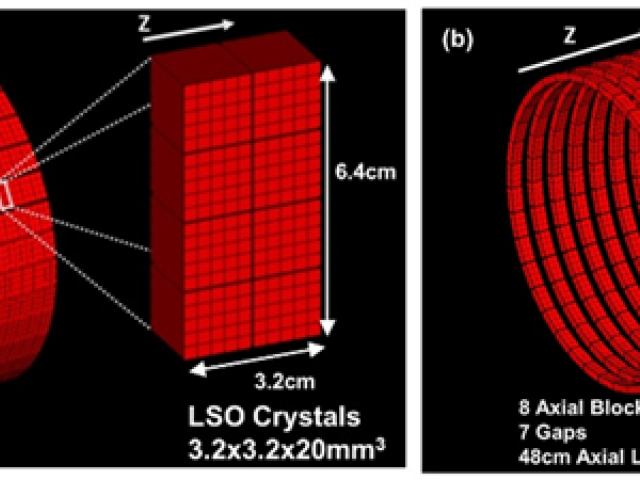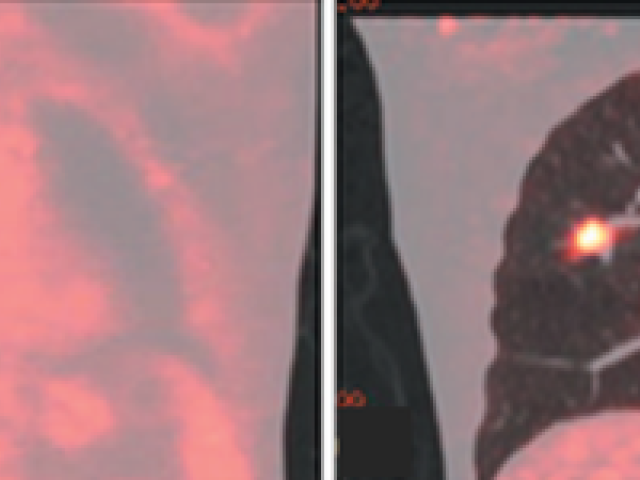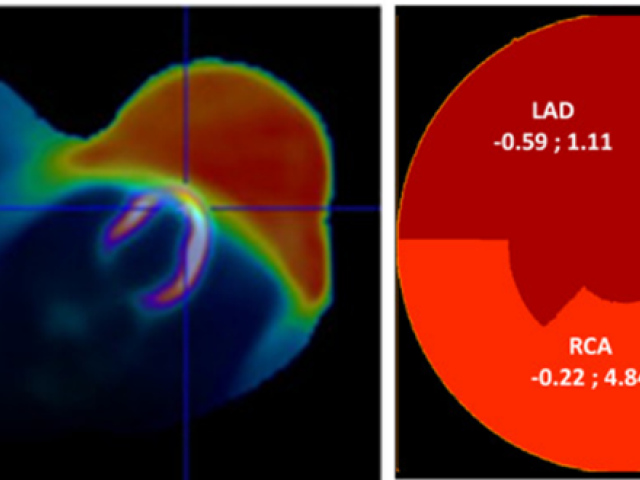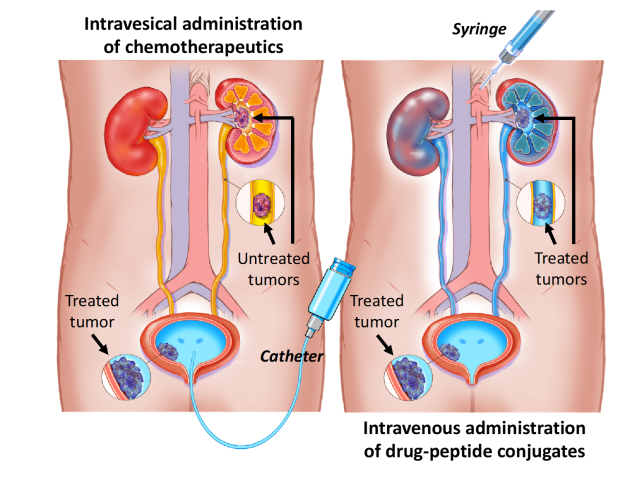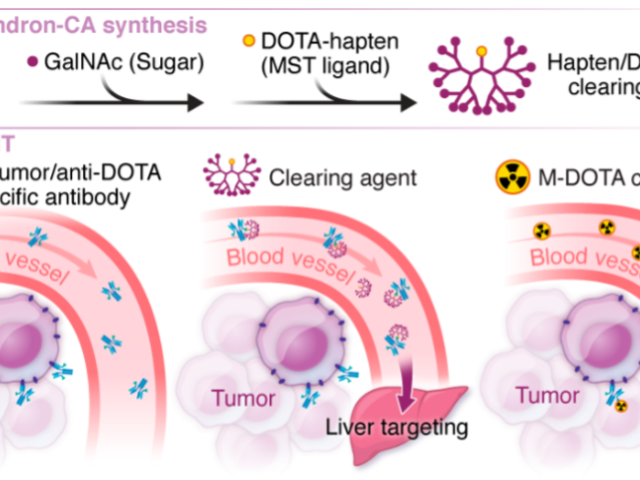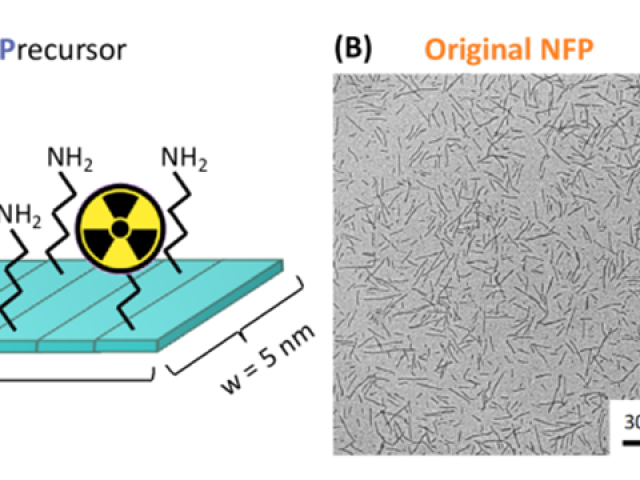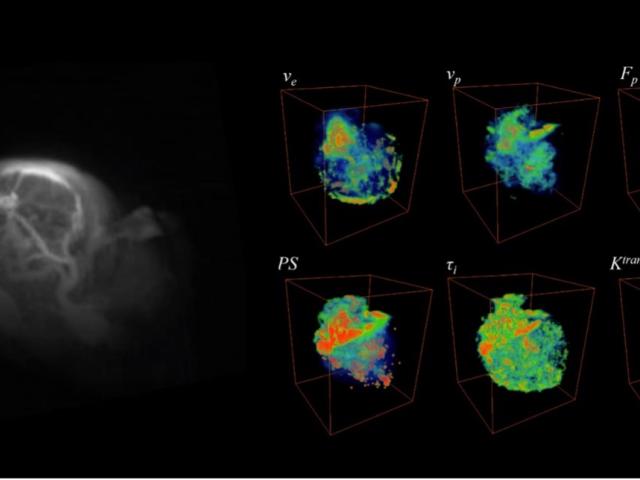Academic Industrial Partnership (AIP) to make gallium 68 more available
Awards or Grants: National Institutes of Health (NIH) Academic Industrial Partnership (AIP) with an R1 grant award for “[a] new technique to make 68Ga-labeled pharmaceuticals widely available for clinical use.”This recently completed National Institutes of Health (NIH) grant found a method to produce large quantities of gallium 68 from a cyclotron with solid targets so that this radiotracer can...
Multi-parametric SUV/Patlak 68Ga-PSMA PET/CT imaging for prostate cancer diagnosis and treatment response monitoring
Prostate cancer is one of the leading causes of cancer death among men in the U.S. and worldwide. The Prostate-Specific Membrane Antigen (PSMA) is a transmembrane protein expressed in all types of prostatic tissue and is broadly recognized as a useful diagnostic and therapeutic agent for prostate cancer. Static whole-body (WB) positron emission tomography/computed tomography (PET/CT), using the...
Development of computationally efficient Monte-Carlo simulations, customized PET data acquisition protocols and image reconstruction methods for adaptively sparse PET scanner geometries
The lab has recently introduced at Weill Cornell Medicine (WCM) the concept of a cost-effective positron emission tomography (PET) detector geometry with adaptable axial field of view (AFOV) via a published series of realistic Monte Carlo simulation studies. The proposed PET systems employ a robust gantry motion mechanism to repeatedly adapt the degree of sparsity between detector blocks to...
Long-axial field-of-view PET
Positron emission tomography (PET) sensitivity and applications (in particular those requiring simultaneous imaging of distant organs) are hindered due to the scanner limited axial field-of-view (AFOV), typically <26cm. A longer AFOV will create new opportunities to extend PET clinical and research applications to perform studies that benefit from simultaneous imaging of distant organs, such...
Correction for respiratory motion in PET/CT
Dr. Sadek Nehmeh’s work in respiratory motion correction in combined positron emission tomography (PET)/computed tomography (CT) images was the first worldwide. He developed multiple methodologies to correct for breathing-induced artifacts, and his work on motion correction in PET/CT was awarded research grants from the National Institutes of Health (NIH) and General Electric (GE) Medical Systems...
Cancer-induced cardiac toxicity
In breast cancer radiotherapy, the mean heart dose is currently 1–5 Gy. Exposures at these levels can cause ischemic heart disease that worsens within five years post-radiation, then continues into the third decade. Determining radiation-induced cardiac toxicity soon after radiotherapy allows for early assessment and intervention of heart disease. Currently, detecting changes in myocardial...
A urinary drug-disposing approach as an alternative to intravesical chemotherapy for non-muscle invasive bladder cancer
This project involves a proposal to use a small bio-inert peptide as an alternative strategy to intravesical chemotherapy (ITC) for improvement of bladder cancer treatment and survival outcomes. When using the peptide as a drug delivery platform, the chemotherapeutics will be eliminated exclusively via renal clearance with minimal deposition in other main organs. This urinary drug disposing...
Establishment of efficacy of DOTA-based pretargeted radioimmunotherapy with a bivalent radiohapten for enhanced therapeutic indices
We are currently developing a novel bivalent radiohapten class that we refer to as “gemini” for “twin haptens” to achieve improved therapeutic indices (TIs) via cooperative binding at intratumoral bispecific anti-tumor/anti-DOTA antibody (BsAb).
Smart nanofibers with preferential lung-targeting properties for metastatic breast cancer treatment
In this project, the lab designed a new nanofiber precursor (pNFP), a new generation of nanofibers with preferential lung-targeting and retention properties for treating pulmonary metastases. The nanofibers, which display a very high aspect ratio, can rearrange into a large interfibril network. In the deep alveolar areas, this network favors passive lung targeting and local retention via...
Imaging tumor cellular and vascular properties
Assessment of cancer treatment requires an effective non-invasive method of measuring both the vascular and cellular changes induced by therapies. Our central hypotheses is that dynamic contrast-enhanced (DCE) magnetic resonance imaging (MRI) measurement, using the active contrast encoding (ACE) MRI method, can provide a fast and quantitative means to assess both anti-angiogenic and cytotoxic...



